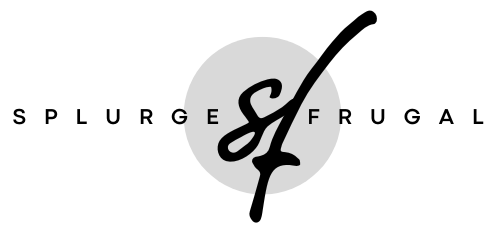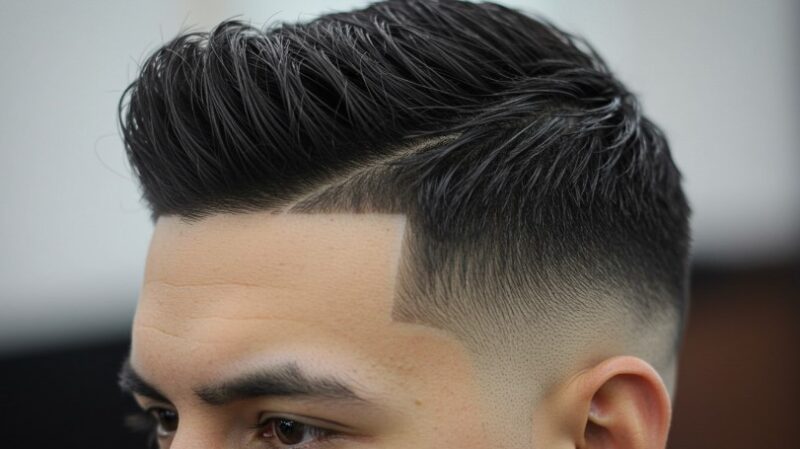A well-chosen haircut can transform how someone looks and feels. For those with shorter statures, strategic styling creates visual tricks that enhance height perception. This isn’t magic—it’s about using volume, angles, and vertical lines to draw the eye upward.
Modern cuts focus on balancing proportions to avoid overwhelming facial features. Textured tops with tapered sides, for example, add lift without appearing bulky. The goal is to complement body shape while aligning with current trends.
Choosing the right look also depends on face structure. Oval, square, or round faces each require tailored approaches to maximize elongation. Pairing these techniques with confidence-building styles ensures a polished appearance.
Key Takeaways
- Strategic styling creates the illusion of height through volume and vertical lines.
- Face shape and body type determine which cuts work best for proportionality.
- Confidence grows when a hairstyle aligns with personal style and modern trends.
- Textured tops with tapered sides balance lift and structure effectively.
- Professional barbers can tailor cuts to individual features for optimal results.
Introduction and Impact of Hairstyles on Appearance
The right haircut acts like a visual elevator, reshaping perceptions without changing physical stature. Clever styling directs attention upward, creating balance for those wanting to emphasize verticality. This approach uses natural hair texture and angular cuts to build proportions that enhance stature.
The Illusion of Added Height
Vertical lines and lifted crowns draw eyes upward, making the body appear taller. A textured top with shorter sides adds dimension without bulk. These techniques trick the eye into perceiving extra inches through structured contrasts.
| Technique | Visual Effect | Maintenance Level |
|---|---|---|
| Vertical Fade | Elongates neckline | Medium |
| Textured Crop | Adds crown height | Low |
| Side-Swept Fringe | Creates diagonal lift | High |
Boosting Confidence Through Style
When cuts align with facial structure, they amplify natural features rather than fighting them. This harmony between hair and physique fosters self-assurance in social interactions. Well-executed styles become conversation starters, reinforcing positive self-image.
Regular trims keep shapes crisp, maintaining the illusion of added height. Pairing these cuts with confident posture completes the transformation. The result? A polished look that feels authentic and intentional.
The Science Behind Hairstyle Illusions
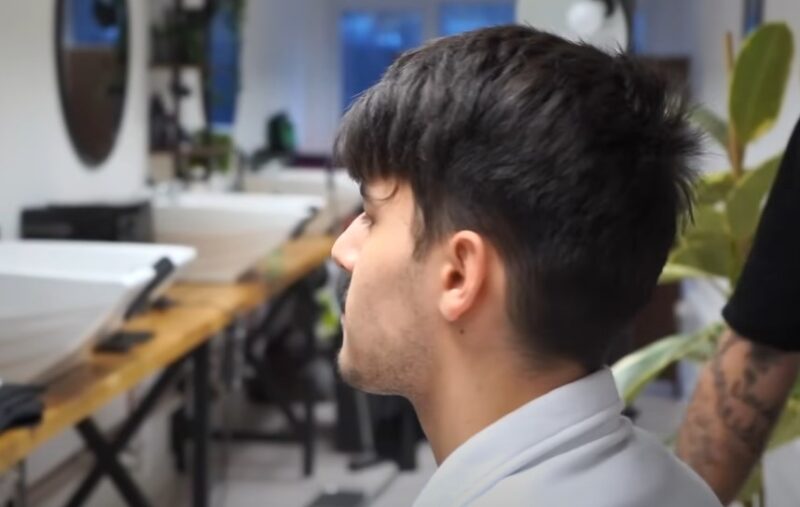
Visual perception plays a bigger role in height assumptions than most realize. Strategic styling leverages principles of optical psychology to reshape how others perceive proportions. This science isn’t about deception—it’s about guiding attention through intentional design.
How Hair Volume Influences Perception
Adding lift at the crown creates a vertical anchor point. When volume concentrates at the top of the head, it mimics the natural elongation taller individuals possess. Light reflects differently off textured layers, enhancing this effect.
- Density at the crown shifts focus upward, minimizing emphasis on horizontal features
- Layered textures scatter light, creating a fuller appearance that suggests added height
- Asymmetrical volume balances facial symmetry while maintaining upward visual flow
The Role of Vertical Lines in Styling
Straight, upward lines in hair design act like arrows pointing toward the sky. A sharp side part or vertical fade elongates the neck and jawline. These elements work because human eyes naturally follow directional cues.
Contrast matters too. Short sides paired with longer tops emphasize verticality through stark differences in length. For example, a textured crop with a high fade uses sharp transitions to highlight upward movement.
Psychology reinforces these effects. People assess stature based on silhouette proportions rather than exact measurements. By mastering these principles, anyone can craft looks that optimize perceived height through smart volume distribution and line orientation.
Hairstyles for Short Men: Signature Styles
Mastering signature looks requires understanding how structure and product work together. Two iconic designs stand out for their ability to optimize vertical emphasis through strategic shaping and texture control.
Short Pompadour Essentials
The pompadour combines sharp contrasts with upward momentum. Shorter sides and back create clean lines, while longer front sections get styled vertically using strong-hold products. This technique builds instant lift at the crown without overwhelming facial features.
Quality pomade ensures the hair maintains its sculpted shape throughout the day. Barbers often recommend monthly trims to keep side proportions balanced against the heightened top section.
Quiff Variations for Versatility
For a more casual approach, the quiff offers similar height benefits with less rigidity. Its textured front area adds volume through loose, swept-back layers. This style works particularly well with wavy or thick hair types.
Both designs excel at redirecting attention upward through their top-heavy silhouettes. When paired with tapered sides from a skilled barber, they create harmonious proportions that enhance stature naturally.
Key maintenance involves regular trims and lightweight styling products to avoid weighing down the lifted sections. These timeless options adapt effortlessly from office environments to weekend outings.
Bold and Edgy Cuts for a Taller Look
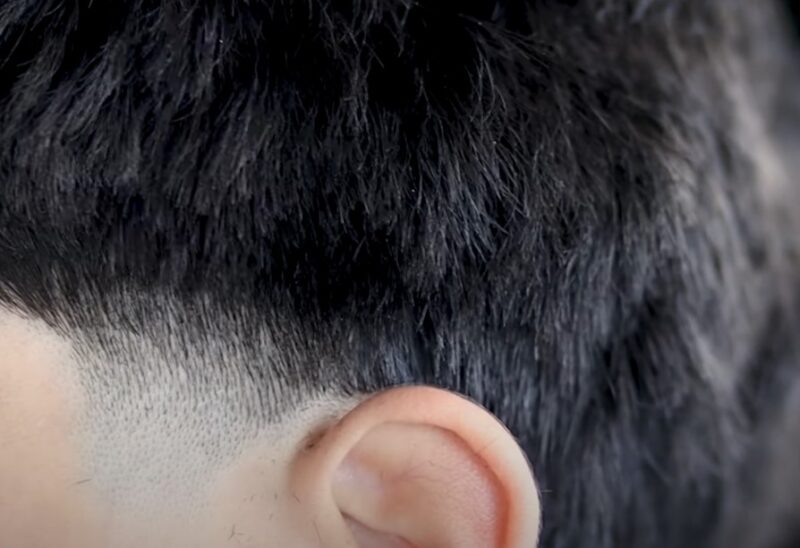
Edgy designs reshape proportions through daring contrasts and directional styling. These approaches amplify verticality while making strong visual statements. Their success lies in balancing drama with precise execution.
Faux Hawk and Spiked Hair for Impact
The faux hawk uses strategic length differences to build upward momentum. Longer center strips get textured and lifted, creating a vertical stripe effect. This draws eyes toward the crown while keeping sides clean for contrast.
Spiked variations take the concept further. Stiff-hold products push strands upward, adding literal height at the front. Straight hair types hold these shapes best, requiring minimal daily styling after initial setup.
- Maintenance: Weekly trims preserve sharp lines; clay or wax maintains texture
- Face shape match: Angular jaws balance the style’s intensity; round faces need softer spikes
- Confidence factor: Bold cuts demand self-assurance but reward with heightened presence
These edgy looks thrive in professional settings when kept polished. A matte finish product reduces shine for boardroom-appropriate versions. Nightlife variations can experiment with extreme height or colored gels.
Barbers recommend starting with subtle spikes before committing to dramatic versions. This allows gradual adaptation to the attention these cuts attract. Proper execution transforms daring designs into stature-enhancing tools.
Clean and Minimalist Buzz and Crew Cuts
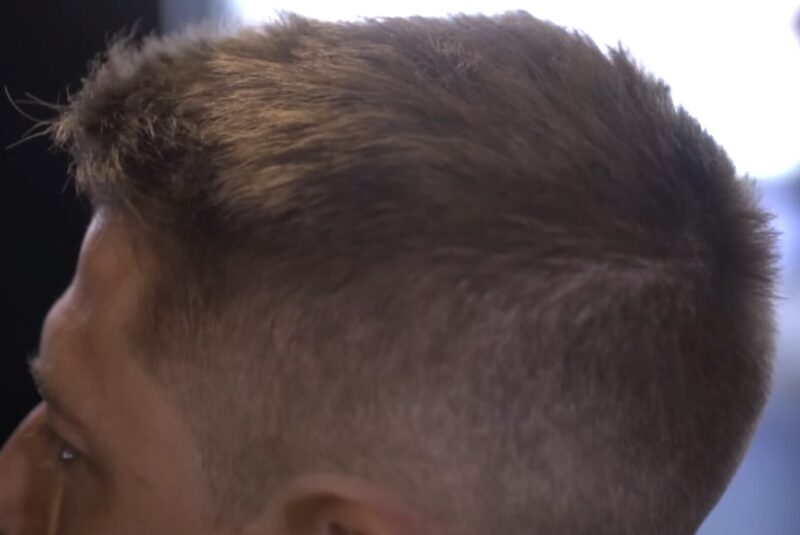
Precision trumps complexity when mastering height-enhancing styles. Buzz and crew cuts strip away bulk to emphasize clean lines and proportional balance. These designs rely on strategic length variations rather than dramatic volume to create elongation.
Benefits of a Buzz Cut
The buzz cut’s uniform length removes visual weight from the sides. This draws attention to the crown and neckline, creating vertical continuity. Its simplicity requires minimal styling while projecting sharp professionalism.
- Daily upkeep takes under two minutes – just wash and go
- Consistent length minimizes scalp shadows that shorten facial proportions
- Versatile base for experimenting with beard styles that complement head shape
| Style | Top Length | Maintenance Cycle |
|---|---|---|
| Buzz Cut | 1/4" - 1" | Bi-weekly trim |
| Crew Cut | 1" - 2" | 3-week taper |
Crew cuts offer subtle height gains through graduated lengths. The slightly longer top allows textured products to add lift without compromising neatness. Both styles work particularly well for square and oval face shapes.
Barbers recommend adjusting clipper guard sizes to match individual head proportions. A #2 guard might elongate a round face, while a #4 balances angular features. This customization ensures optimal stature-enhancing results.
Modern Undercut Techniques
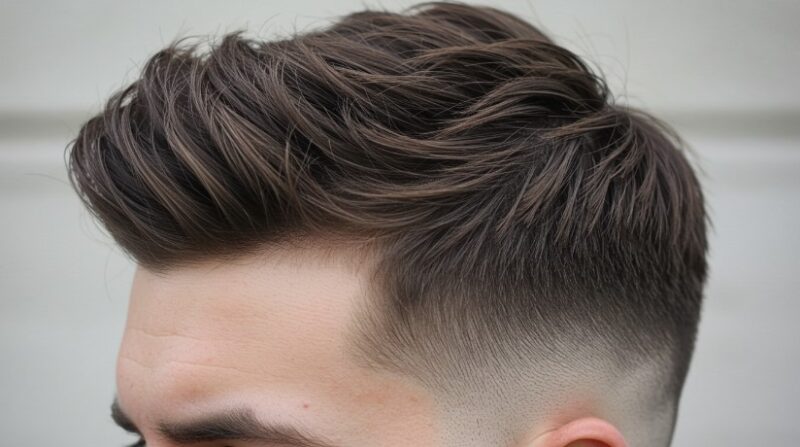
Sharp contrasts redefine proportions in contemporary grooming. The undercut dramatically alters head shape by keeping the top section long while trimming sides and back to near-skin level. This vertical exaggeration shifts focus upward, creating an instant height-boosting effect.
Achieving a Balanced Contrast
Successful undercuts rely on precise length ratios. The top should measure 3-4 inches to allow styling flexibility, while sides stay below 0.5 inches. Gradual blending prevents harsh lines between sections, maintaining natural-looking transitions.
| Technique | Top Length | Transition Zone | Maintenance |
|---|---|---|---|
| Fade Undercut | 3" | Medium blend | 3 weeks |
| Disconnected | 4" | Sharp contrast | 2 weeks |
| Tapered Back | 3.5" | Soft gradient | 4 weeks |
Barbers often recommend undercut techniques that complement face shape. Oval faces handle extreme contrasts well, while round faces benefit from longer transition zones. Proper product use maintains texture without flattening the lifted hair.
Maintenance proves crucial for this style. Monthly trims keep the cut sharp, while daily matte paste preserves volume. When executed well, the design creates lasting visual impact through calculated asymmetry and directional styling.
Textured Crop and Messy Looks for Casual Style
@hh_barbers My Haircut Academy + Mentorship Link in my Bio📚 #shearwork #texturedcrop #texturedhair #scissorwork #barber #tutorial #haircuttutorial ♬ original sound - HH BARBERS
Casual elegance meets practicality in textured crop designs. These styles combine relaxed aesthetics with smart structural elements that enhance verticality. The key lies in creating natural movement that draws eyes upward without appearing overstyled.
Low-Maintenance Volume Boosts
Modern textured crops prioritize ease through strategic layering. Point cutting and razor techniques remove bulk while preserving crown height. This approach achieves three benefits:
- Morning routines take under 5 minutes with air-dried texture
- Matte products enhance grip without weighing down strands
- Regular trims every 6-8 weeks maintain shape integrity
Diverse Texturing Methods
Barbers adapt techniques to hair density and growth patterns. Fine textures gain body through choppy layers, while thick types use thinning shears for controlled volume. Consider these professional approaches:
| Hair Type | Technique | Product Match |
|---|---|---|
| Straight | Razor slicing | Sea salt spray |
| Wavy | Disconnected layers | Texture clay |
| Curly | Twist cutting | Custard cream |
For those exploring versatile short styles, textured crops adapt seamlessly from beach outings to client meetings. The secret lies in balancing structure with intentional disarray – a mastered art in contemporary grooming.
Hairstyle Trends Inspired by Military Cuts
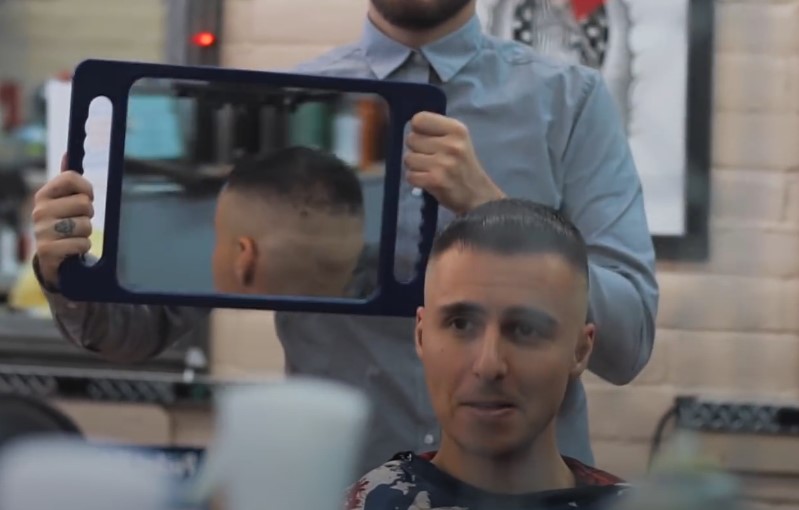
Military precision meets modern grooming in structured designs that redefine proportions. These looks prioritize sharp contrasts between sections to create vertical emphasis. Their disciplined approach appeals to those seeking polished styles with height-enhancing benefits.
High and Tight Variations
The high-tight variation features ultra-short sides and back paired with a slightly longer top. This contrast draws eyes upward, creating an elongated silhouette. Barbers often use clippers set to #1 or #2 guards for the shorter sections while leaving 1-2 inches on the crown.
| Style | Top Length | Sides/Back Length | Maintenance |
|---|---|---|---|
| Classic High-Tight | 1.5" | 0.25" | Bi-weekly |
| Fade Variation | 2" | Skin fade | 3 weeks |
| Tapered Back | 1.25" | 0.5" taper | Monthly |
Three factors make this cut effective for stature enhancement:
- Vertical lines created by the length contrast
- Minimal bulk around ears and neck
- Easy upkeep with clipper trims every 2-3 weeks
For professionals exploring military-inspired cuts, the style adapts well to corporate environments when kept neatly blended. Matte products maintain texture without shine, preserving its disciplined aesthetic.
Modern versions allow personalization through subtle tapering or faded transitions. These updates keep the look contemporary while maintaining its core height-boosting geometry. The result? A confident appearance rooted in timeless structure.
Slick and Polished Styles for a Refined Look
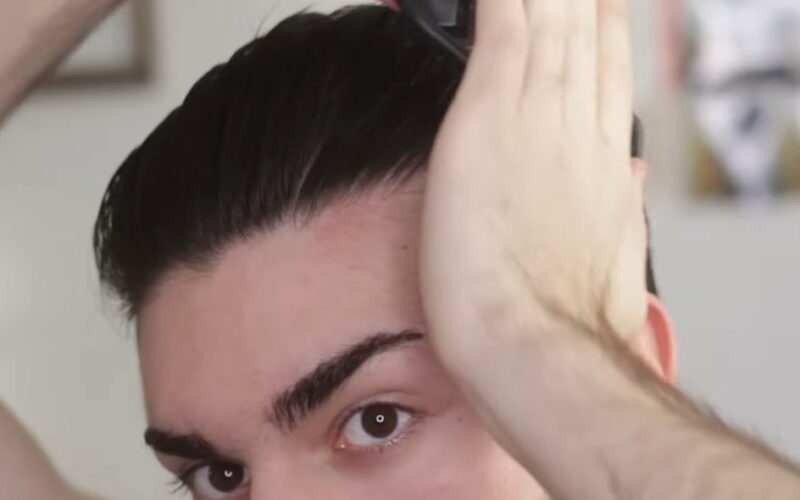
Timeless grooming techniques offer sophisticated solutions for those prioritizing clean aesthetics. Sleek designs use directional styling to streamline facial proportions while creating vertical emphasis. These approaches work particularly well for formal settings or professional environments.
Mastering the Slick Back Technique
Slicking hair back with quality pomade removes bulk around the face, drawing attention upward. The smooth surface reflects light along the crown, enhancing perceived height. For best results, apply product to damp strands before combing into place.
Perfecting the Deep Side Part
A sharp part creates asymmetry that adds dimension to thinner textures. This technique shifts volume toward one side, balancing facial features while maintaining a polished look. Use a fine-tooth comb for precision, finishing with light-hold spray to lock the shape.
Both styles thrive with regular trims to maintain crisp lines. For inspiration on tailored variations, explore versatile short cuts that blend classic elegance with modern flair. Confidence grows when styling choices align with personal aesthetics and proportion-enhancing principles.
